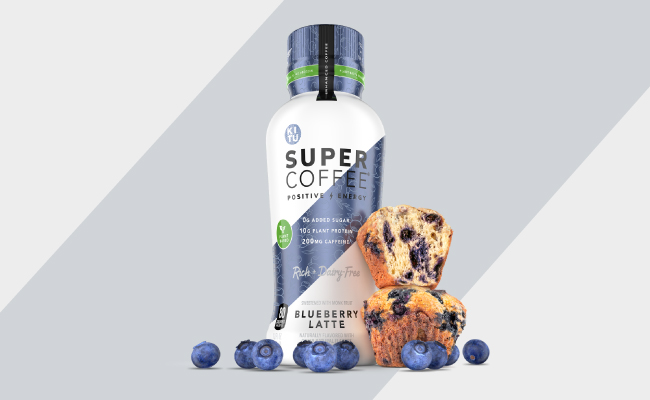The New Yorker: How the Rise of Non-Alc Beverages is Impacting Sober Consumers
The rise of “zero-proof” alcohol alternatives has been hailed by many in the beverage industry as a victory for health and inclusivity, as sober and “sober curious” consumers embrace a new wave of non-alcoholic beers and spirits.
But according to journalist John Seabrook, writing this week in the New Yorker, non-alcoholic alternatives present a much more complicated dilemma for recovering alcoholics than the marketing might suggest. According to Seabrook, who writes that he is over five years sober, for many addicts in recovery alcohol alternatives could have a triggering effect, reigniting long dormant cravings for the hard stuff.
“When I mentioned my upcoming visit to [Athletic Brewing Company’s] taproom to a friend, a psychiatrist who is a twenty-year veteran of A.A.’s twelve-step program, which he credits with saving his life, he replied, ‘Non-alcoholic beer is for non-alcoholics,’” Seabrook writes. “It was like playing Russian roulette with your sobriety, even if the bullet in the chamber was a blank. He also reminded me, as people in recovery say, ‘If you hang around the barbershop long enough, you’re going to get a haircut.’”
Though he confesses to playing with fire by sampling a litany of N.A. products, something that he’s warned may be “replacing one habit for another,” Seabrook’s personal journey covers brands including beers Athletic Brewing and Partake Brewing, wine alternative Jukes Cordialities, and zero proof spirits Seedlip and Ritual. However, even brands like Ritual — whose drinks approximate spirit without ever containing alcohol — proved dangerous for some, he wrote, with the brand’s Whiskey Alternative invoking Seabrook’s hard drinking days.
“The nose was remarkably whiskeylike, but there was so much sadness and pain in that smell, and it bit me so acutely—yes, I did feel it in my gut—that I put the bottle down and didn’t even try a taste,” Seabrook wrote. “Who was I kidding? I wanted the rituals back, but not at the expense of my family and my run of alcohol-free days.”
While comfort levels will inevitably vary from person to person, Seabrook’s experience shows that ex-drinkers may not always be the right target audience for non-alc brands.
Austin American-Statesman Profiles Super Coffee
After relocating its headquarters from New York to Austin, Texas last year, Kitu Life Super Coffee has only continued to establish itself as a national leader in the functional cold brew category. Today, Texas news org the Austin American-Statesman profiled the company, which began in the Philadelphia University dorm room of co-founder Jordan DeCicco six years ago.
Run by Jordan and his brothers, CEO Jim DeCicco and chief revenue officer Jake DeCicco, Super Coffee has to date raised over $175 million in financing and last year signed a master distribution agreement with Anheuser-Busch InBev.
Over the past decade, Austin has become a hub for startups across industries, and speaking to the Statesman, Jim DeCicco praised the collaborative nature of the city’s business community and contrasted it to the “every man for himself” ethos of New York.
“Last year we were living in New York and we were getting ready to grow to a national presence from the startup phase,” Jim DeCicco said. “Austin is one of the best cities for high-growth food and beverage companies and we just thrive off the energy here. We wanted to be in a place that is collaborative and creative.”
In addition to being the home of beverage brands like Waterloo Sparkling Water, Cuvee Coffee and Wanu Water, Austin continues to attract new companies seeking to relocate; last month, prebiotic soda brand Poppi told BevNET that it was in the process of moving its headquarters to the city from its current location in Dallas.
Reuters: As Climate Changes, U.S. Farmers Turn to Coffee
While coffee crops have long been produced in the “Coffee Belt” that covers countries such as Colombia, Peru, Ethiopia and Vietnam, a new country is entering the market: the United States.
According to Reuters, U.S. farmers in California and Florida are beginning to plant coffee trees, which require constant heat to thrive. The trend is one byproduct of climate change, which despite having disastrous results for crops around the world, has brought higher temperatures to the U.S. that have pushed farmers to pivot towards tropical crops that benefit from the shift.
Despite being the world’s largest coffee consumer, the U.S. produces just 0.01% of coffee, Reuters reported, with all coffee farming centralized in Hawaii. Now, California and Florida become potential supply hubs as Coffee Belt nations suffer extreme weather shifts that have disrupted production and tightened an already tenuous supply chain.
However, as American farmers invest in dryer pastures, some in the coffee industry, such as Mercon Coffee Group sustainability director Giacomo Celi, are concerned that their inexperience and the volatility of weather patterns make the move unnecessarily risky.
“It seems more logical to invest in new coffee varieties that could be grown in the same current geographies,” Celi told Reuters.

